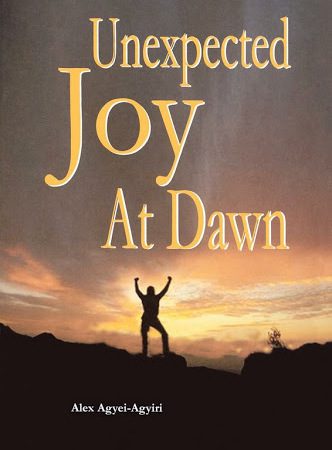“The Panic of Growing Older” by Lenrie Peters is a poem about the growing anxieties of man as he undergoes different phases in his life. The poem goes from age twenty where there are a lot of hopes of success, then, to age thirty when all these hopes, aspirations, and the sense of time fizzle out like they never existed.
Growing up comes with its own anxieties. A man wants to become this and that person in order to be fulfilled. Along with these aspirations are the growing enthusiasm and the feeling that there is enough time to fulfil all what he has set out to do and accomplish.
However, as he ages and becomes vested with more responsibilities, he realises in retrospect that there was never enough time in the first instance. And that he has not really accomplished all the lofty dreams and heart desires. There is then a sense of failure and regret. This is the stage when he becomes really frustrated.
The ideas in the foregoing paragraphs are what Lenrie Peters’ “The Panic of Growing Older” reflects. The poem using an omniscient narrator addresses a generic person with the second person pronoun “you”. It narrates the life experiences of this person, drawing an outline of the phases of his life and the motivations behind each.
“The Panic of Growing Older” is a poem of thirty two lines patterned into eight stanzas. Each stanza has four lines. In other words, there are a total of eight quatrains in the poem.
Analysis
Stanza One
The first stanza is a grammatical sentence running into four lines. It defines the anxieties that come with growing up in terms of “fluttering wings”. This stanza sums up the waning desires and hopes that each year of one’s life imprints in one’s mind. It sums up what to expect in the poem.
The stanza particularly retains the title in its first two lines, “The panic of growing older”. Every New Year, people set goals and aspirations. They make New Year resolutions. These goals, aspirations, and resolutions are actually influenced by their anxieties to make something out of their lives. Their anxieties are akin to the up-and-down movements of a bird’s “wings”.
Stanza Two
The second stanza of the poem projects the “hope/of gigantic success/time and exploration” a man is driven by at age twenty. In other words, this particular age is the age of hopes and dreams. He is full of expectations at this age.
He is definitely sure of the monumental success that awaits him in years to come. Along with this hope, there is also the calmness about the fact that there is enough time to achieve this “gigantic success” and for the world’s “exploration”.
At this age, there are fewer responsibilities and commitments if any. He is like a free bird with the wildest of imaginations.
Stanza Three
At age thirty, he begins to realise that the “gigantic success” expressed in the previous stanza is not forthcoming. This realisation leaves “a sudden throb of pain” in his heart; the fear of being a failure as per the standard he has set for himself years back.
He has not achieved the things he has set out to achieve: “Laboratory tests have nothing to show.” In other words, the society’s assessment of and judgement on him shows he is far from achieving anything spectacular.
Stanza Four
He now has a family and is tied to domestic issues and responsibilities. He has a family to feed and fend for. These responsibilities get in the way of any “sudden leaps at the moon”. Now, he has to put his family into consideration before jumping at any opportunities or offers.
The hope of “gigantic success” at twenty is reduced to just making ends meet at age thirty upward with “legs cribbed in domesticity”. His domestic responsibility becomes a kind of social obstacle to the fulfilment of his dreams and ultimately, his advancement.
His economic buoyancy is therefore hampered by the burgeoning financial needs of his family.
Stanza Five
The poet then portrays the man at this stage as someone who has no savings to start with because of the numerous financial demands and obligations he is saddled with. It is even implied by “red ink” on “copybook” that he might have run into debt as a result of his expenditures.
Obviously, he has failed and financial lack is chief among his failures. Consequently, he has “nothing to show the world.” There is no substantial achievement to claim and flaunt as his.
Stanza Six
Having failed in the other aspects of life, the man may want to take solace in the fact that he has children. However, the poet says children cannot be tagged as special achievements: “No specialist’s effort there.” The society expects everyone to have children: “three children perhaps the world expects it of you.”
In other words, it is posited that it takes “no specialist’s effort” to have children. So, having children cannot erase the fact that one has failed at every other thing.
Stanza Seven
Then, the man clings to longevity of life as his last straw from drowning in the sea of depression and hopeless. There is a particular reference to the age of Moses in Deuteronomy 34:7 as an empirical evidence of how long man can live. From Moses onward, the maximum life span of human beings is around 120 years and 130 years which science affirms to be true.
Among the Yoruba-speaking people of Southwest Nigeria, there is a saying that “bi emi ba si wa, ireti n be” which loosely translates as “when there is life, there is hope.”
However, the poet issues a rejoinder that “hope is not a grain of sand.” Long life is a luxury not everyone will have be privileged to have.
Stanza Eight
In the last stanza of the poem, the man falls on his “sharp blades of expectation.” He is continually dissatisfied with his inability to achieve “gigantic success”. After having exhausted all available options, he finds his untrammelled growth and advancement enmeshed in social obstacles.
He loses control over the trajectory of his life and lives in line with the dictates of the world: “from now on the world has you.” His existence is basically reduced to working and making ends meet. He is caught in between the fight for sustenance and survival, knowing that his dreams and aspirations of younger years are out of reach. His vigour dwindles down as he ages.
Figures of Speech
The figures of speech in the poem include metaphor, metonymy, onomatopoeia, allusion and apostrophe.
Metaphor
Metaphor is a figure of speech in which an expression is used to refer to something that it does not literally denote in order to suggest a similarity. The following are the examples of metaphor in the poem:
“blades of expectation” (line 32) “legs cribbed / in domesticity” (line 13 – 14)
Metonymy
Metonymy is the substitution of the name of an attribute or feature for the name of the thing itself. The following are examples of metonymy in the poem:
“laboratory tests ...” (line 11) “copybook bisected/with red ink” (lines 17 – 18)
Onomatopoeia
Onomatopoeia is the use of words that imitate the sounds they denote. Onomatopoeia manifests in line 10 of the poem where the poet uses the word “throb”, an imitation of the sound the human heart makes when pulsates with abnormal force.
Allusion
Allusion is a figure of speech contained in expressions which make indirect reference to historical events or activities in the bible, classical literature texts, et cetera. There is an instance of biblical allusion in the seventh stanza of the poem where the poet alludes to the age of Moses in the Bible: “twice three score.”
Apostrophe
Apostrophe is a figure of speech in which the speaker addresses a dead or absent person, or an abstraction or inanimate object. Stanza one of the poem has an example of apostrophe. The poet treats “panic” as if it were an animate object that can spread its “fluttering wings” of confusion and anxiety in the human minds.
Conclusion
Lenrie Peters “The Panic of Growing Older” is a poem that projects the struggles and aspirations of man through different phases of his life. It is a reflection of the anxieties one predicates his life on as one ages.
The poem probes into the inner struggles of man in relation to the social obstacles he grapples with in course to realise his lofty dreams. Burdened by responsibilities, he transits from being a potential to being an ordinary person with no achievements to show the world.
What is your opinion about the poem? Let us know in the comment section.
Read Next:
- Chapter 1 Summary of Aminata Sow Fall’s “The Beggars’ Strike”
- Q & A: Discuss the role of the gods in the life of Odewale in Ola Rotimi’s “The Gods are not to Blame”
- Q & A: What is the significance of Alaka and Gbonka to the plot development of “The Gods are not to Blame”?
- Q & A: Discuss the appropriateness of the title “The Gods are not to Blame”
Image Credit: Joshua Hoehne on Unsplash.
 WHATSAPP: Click HERE to join the new Literature PADI WhatsApp group to receive latest updates on your phone and for further literary discussions!
WHATSAPP: Click HERE to join the new Literature PADI WhatsApp group to receive latest updates on your phone and for further literary discussions!










